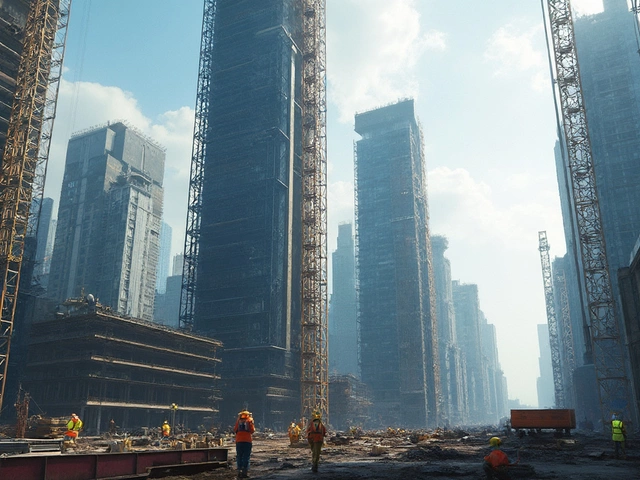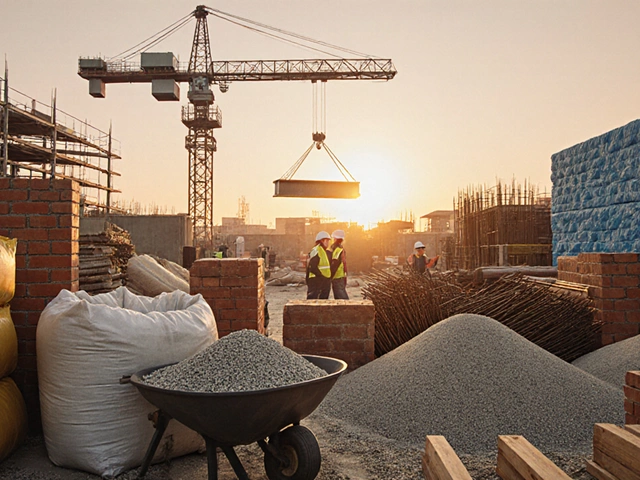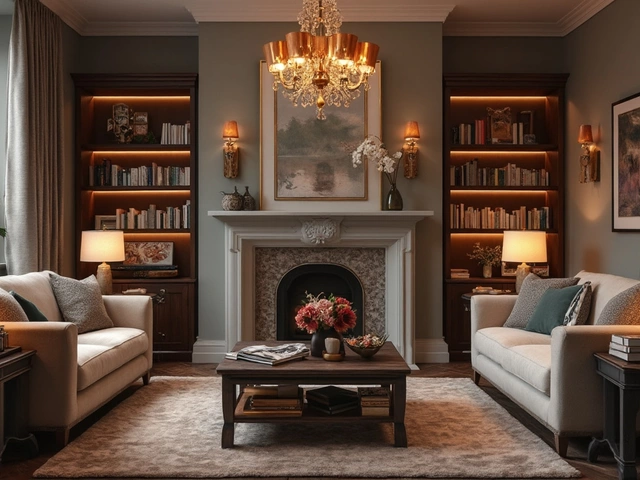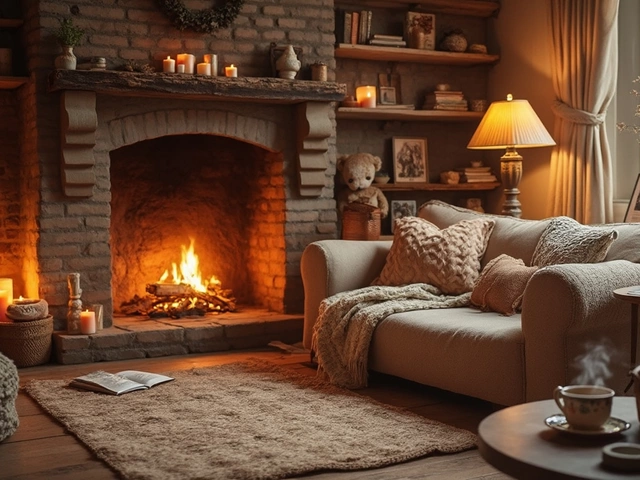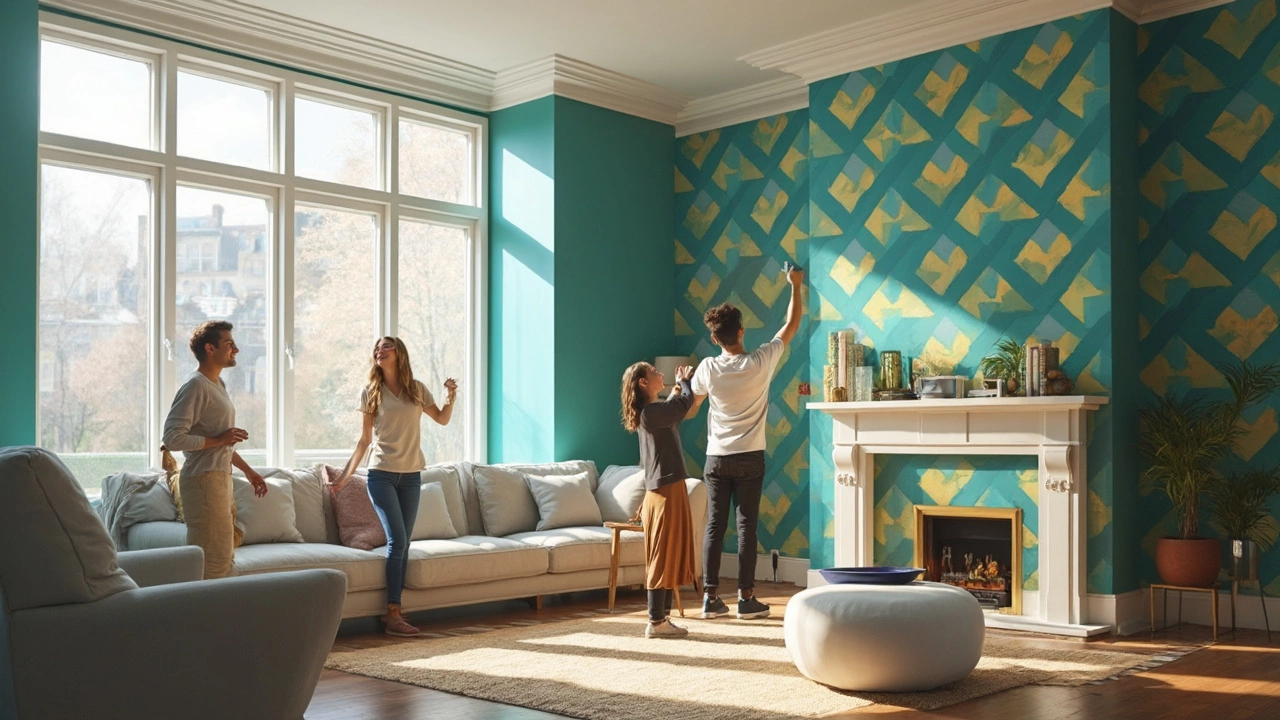
Wallpaper used to make people think of stuffy old houses and paper peeling in guest bathrooms. But is that really true anymore? If you look around—at home remodel shows, stylish coffee shops, or even that hip friend’s new apartment—wallpaper is popping up everywhere. A lot of newer designs look nothing like the old-school florals or busy patterns you might remember from your grandma’s living room.
What’s changed? For starters, manufacturers have gotten pretty smart. There are self-adhesive wallpapers now (think giant stickers for your wall) and the quality has jumped way up. Removing it isn’t a hassle like before. Plus, you can find designs that fit every taste, from subtle textures to wild, oversized prints that practically turn your wall into art. Wallpaper isn’t just for four walls, either—a single accent wall or even the ceiling above your bed gives tons of personality without overwhelming a space.
- Why Wallpaper Got a Bad Rap
- The Modern Comeback
- Wallpaper Styles for Today
- Practical Tips for Installing Wallpaper
- Making Wallpaper Work in Your Space
Why Wallpaper Got a Bad Rap
So, why did people start thinking wallpaper was outdated? Let’s be real: a lot of old wallpaper was just plain ugly or way too busy. In the 1970s and 80s, homes got flooded with floral prints, tacky argyle patterns, or weird color combos that could give you a headache. Once those styles fell out of fashion, the leftover wallpaper just made spaces look stuck in a time warp.
Another big reason wallpaper lost fans was the nightmare of removing it. If you’ve ever tried to rip down old wallpaper, you know it’s no joke. People spent hours scraping at layers, ruining the walls, and sometimes even giving up halfway through. That hassle stuck in a lot of folks’ minds.
Maintenance was a pain, too. Wallpaper doesn’t always age well—especially in rooms with moisture or sunlight. It would peel, bubble, or fade, leaving rooms looking worse for wear. Compare that to just grabbing a can of paint for a fresh coat, and it’s no wonder most people switched sides by the late 1990s.
- Heavy styles made rooms feel cluttered.
- Poor-quality glue and paper led to bubbles and peeling.
- Cleaning was tricky—especially with kids or pets tearing at seams. (I can’t count how many times my dog Bruno’s wagging tail has found a loose wallpaper edge!)
Check out this quick table showing just how frustrating wallpaper could be back then:
| Problem | Impact on Homeowners |
|---|---|
| Hard to remove | Damaged drywall, high cost of repairs |
| Outdated designs | Made spaces feel old and crowded |
| Prone to damage | Peeling, stains, and visible seams after a few years |
With all these headaches, it’s no wonder people started avoiding anything with the word wallpaper. But as you’ll see, things have definitely changed since then.
The Modern Comeback
In the last few years, wallpaper trends have exploded. Big brands like Graham & Brown, Tempaper, and even IKEA have released lines that are anything but outdated. According to a 2024 Houzz survey, nearly 38% of homeowners under 35 said they used modern wallpaper in their most recent home update. That's a big shift from even five years ago.
Social media also fueled the comeback. Instagram and TikTok are full of DIYers showing off peel-and-stick installs, turning boring rentals into Instagram-ready spaces overnight. That’s partly because newer wallpapers don’t require messy paste, and they peel off without destroying walls. It’s become common to swap patterns seasonally—just like changing throw pillows. Renters especially love this flexibility.
Here's what’s changed in the world of wallpaper trends:
- Materials: Vinyl, fabric, and even eco-friendly options are available. Brands now offer wallpapers made with recycled content or water-based inks, meeting the needs of eco-conscious homeowners.
- Application: Peel-and-stick products have taken the fear out of commitment. You can now update a wall in an afternoon, with hardly any tools.
- Personalization: Companies like Spoonflower or Wallsauce let you turn your own photos or artwork into custom wallpaper. No more cookie-cutter looks.
Designers say that wallpaper is now more about making a statement than covering flaws. You might see a bold mural in a tiny powder room, or a textured look behind open kitchen shelving. The goal’s shifted from hiding imperfections to adding wow-factor. If you walk through new boutiques or restaurants, those wild accent walls probably aren’t painted—they’re covered with modern wallpaper.
| Year | Homes Using Wallpaper (%) |
|---|---|
| 2018 | 19% |
| 2022 | 27% |
| 2024 | 33% |
So, is wallpaper old fashioned? Not by a long shot. Just look at how fast it's bouncing back, with fresh patterns, better materials, and more ways to DIY.
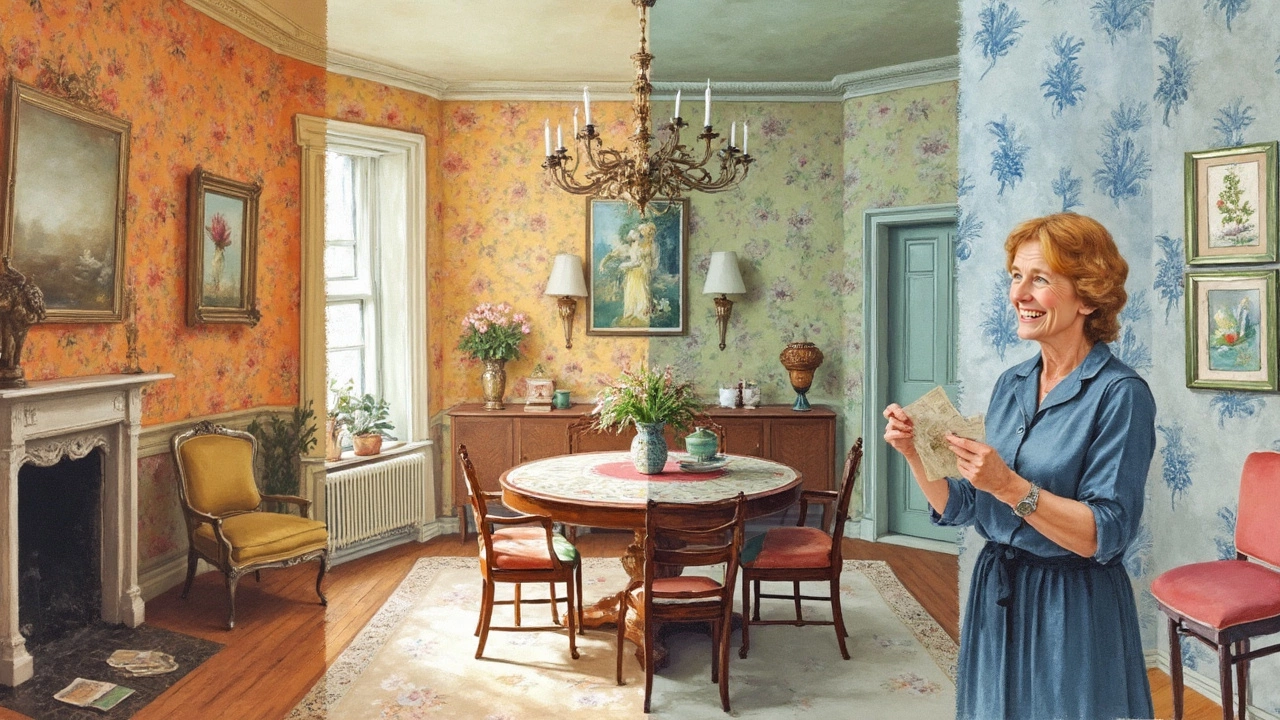
Wallpaper Styles for Today
If you think wallpaper is just old-fashioned roses and paisleys, you’re way behind. Right now, wallpaper trends are all over the place—in a good way. There’s honestly something for every style, whether you want your walls loud, chill, or somewhere in the middle.
Geometric patterns are super hot right now. Think bold shapes, neat lines, and color combos that wake up any boring room. If you’ve seen those Instagram-worthy spaces with diamond or hexagon backgrounds, that’s what’s trending. And the best part: these patterns work just as well in living rooms as they do in tiny powder rooms.
Nature-inspired designs are everywhere too. You’ll find everything from tropical leaves to forest scenes, even detailed animal prints or muted botanicals. These bring the outdoors into your space, which feels extra nice if you live in a city or just want a chill vibe.
If you want to experiment but not go full drama, textures are a big deal in modern wallpaper. You can find faux grasscloth, linen, or even brick and wood prints that look and feel real. These are perfect if you want a bit of interest without an explosion of color or pattern.
And don’t skip murals—they've taken over accent walls in recent years. It’s literally like having a giant piece of art as one of your walls. Custom options let you pick anything from city skylines to abstract brush strokes.
- Removable wallpaper is super popular for renters or anyone who changes their mind often. Peel-and-stick options mean no glue or commitment.
- Matte finishes are overtaking gloss—they look more high-end and feel modern.
- Metallics, like gold and silver, show up as little highlights in patterns, adding some flash in a subtle way.
One survey from the Wallcoverings Association in 2024 showed that textured and peel-and-stick wallpapers made up about 60% of all new wallpaper sales. That’s a huge jump from just a few years ago.
| Style | Where It Works Best | Popular Feature |
|---|---|---|
| Geometric | Living room, office, entryway | Bold lines, 3D effects |
| Botanical/Nature | Bedroom, bathroom, dining room | Greenery, calming scenes |
| Textured | Everywhere | Faux finishes, touchable surfaces |
| Murals | Statement wall, nursery, gym | Custom art, photo realism |
| Metallic Accents | Hallway, accent strips | Gold or silver details |
If you’re thinking about trying a home decor refresh, wallpaper isn’t stuck in the past. The new stuff looks sharp and is way easier to work with, no matter your style or skill level.
Practical Tips for Installing Wallpaper
Putting up modern wallpaper isn’t as scary as it used to be. But if you do it wrong, you’ll notice every bubble, mismatch, or peel. Here’s what actually helps, whether you’re a pro or doing it for the first time.
First thing: read the manufacturer’s guide. It’s not there just for show. Different wallpapers—especially peel-and-stick versus traditional paste—have their own quirks. You’ll need different prep for each.
- Prep the wall: Your wall should be smooth, dry, and clean. Fill nail holes and sand any rough spots. Dust or grease will mess up how well the wallpaper sticks.
- Measure twice, cut once: Don’t eyeball it. A metal ruler and sharp blade save you from wonky edges. Always add a few inches to your wallpaper length for trimming at the top and bottom.
- Line up patterns: For patterned wallpaper, line up the design at eye-level and move outward. A mismatch near the floor is less obvious than a mistake at the ceiling or smack in the middle of the wall.
- Smoothing tools matter: A plastic smoother (looks like a big credit card) fixes most bubbles. Push air out sideways as you go. Some folks swear by using a wallpaper brush or a soft cloth—just don’t use anything sharp.
- Work in pairs: One person holds the paper, one lines things up and smooths it down. If you’re solo, take your time and use painter’s tape to temporarily hold pieces in place.
If you’re using the classic paste method, don’t rush. Give the paper time to soak (usually about 5 minutes—check your instructions) so it gets flexible. That helps it lie flat. With self-adhesive wallpaper, peel just a foot or two at a time, sticking as you go. Trying to do a whole panel at once almost always leads to wrinkles.
Quick heads-up for renters: Removable wallpaper is your friend. Look for "peel-and-stick" on the label. It usually comes off in one piece, and leaves minimal residue. Oh, and avoid high-moisture zones (like right behind the stove or a shower) if your wallpaper isn’t labeled washable or water-resistant.
| Wallpaper Type | Ease of Removal | Best For |
|---|---|---|
| Peel & Stick | Easy | Renters, quick changes |
| Pasted (Traditional) | Medium/Hard | Permanent projects, textured finishes |
| Prepasted | Moderate | DIY with water activation |
Take your time, especially at the corners and edges. That’s where most flaws show up. And if you're covering a spot the dog chewed—speaking from experience!—just add a little extra adhesive in the tricky spot. You’ll be staring at your home decor project for a long time, so it’s worth those extra minutes to get it right.
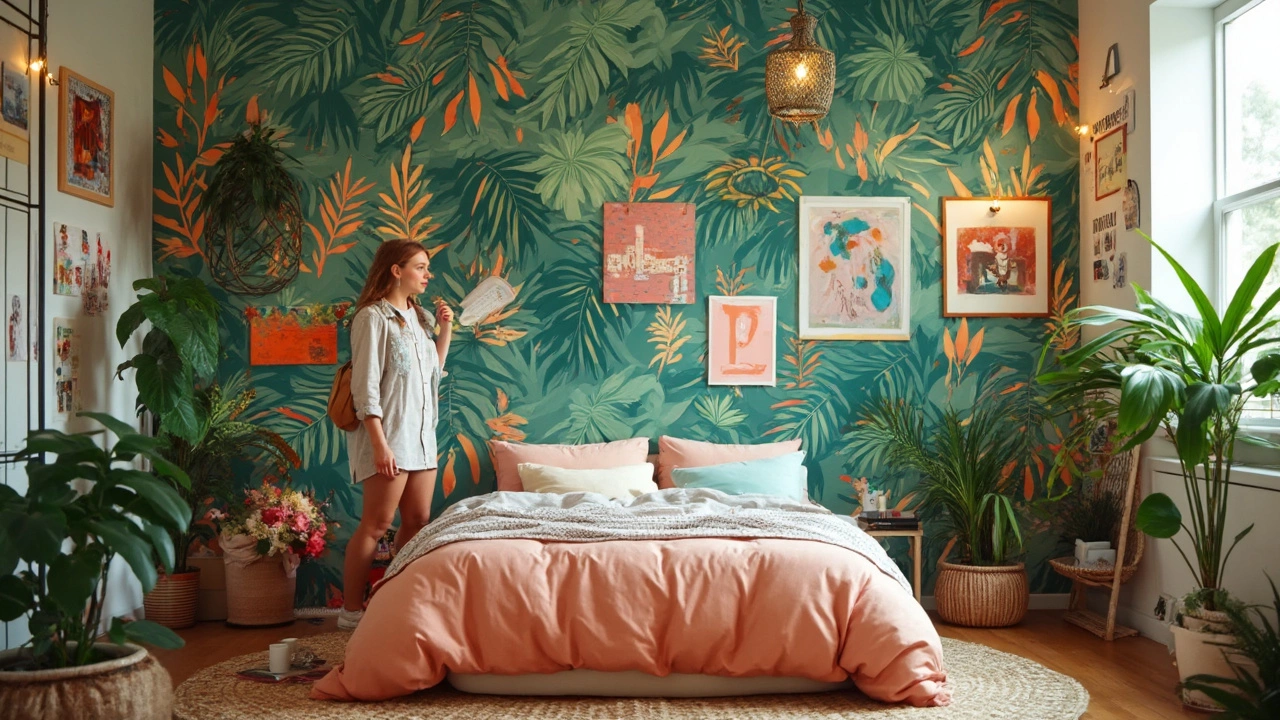
Making Wallpaper Work in Your Space
The best part about modern wallpaper is how flexible it is. Forget trying to match your neighbor’s look—this is about your style. Before grabbing the first roll you see, think about what you want each room to feel like. For example, bold prints can liven up an entryway, but you might want something calmer for a bedroom where you sleep. Don’t just go for pretty—pick something that actually fits the mood of the room.
One cool trick designers use? Start small. Try wallpaper inside a closet, behind shelves, or on a single wall. This way, you get a pop of style without a big commitment. Even renters can get in on the trend—those peel-and-stick wallpapers can come off without wrecking your walls when your lease is up.
Lighting is another thing to check. Shine a light (literally!) at your wallpaper sample before you buy. Some shiny or metallic wallpapers will look dramatic in daylight but maybe too much at night. Flat, textured wallpaper can actually hide wall flaws and make small rooms feel cozier.
Here's a quick tip list if you're looking to get the most out of current wallpaper trends in your home:
- Measure way more than once—most mistakes happen from buying too little or too much.
- Use strong patterns on one accent wall to create a focus point without overpowering the room.
- Poke small holes in wallpaper to let trapped air out while installing—this helps avoid bubbles.
- If you have pets like my dog Bruno, go for washable options (trust me, you’ll be glad later).
- Consider textured wallpaper to add some depth, especially in rooms lacking architectural features.
Compared to paint, wallpaper also covers up imperfections better and lasts longer when installed correctly. In fact, a study by a major home improvement retailer in 2023 showed that rooms with recent wallpaper upgrades saw a 12% boost in perceived home value during showings. Here’s a quick comparison:
| Option | Durability | Design Flexibility |
|---|---|---|
| Paint | 5-7 years | Limited |
| Wallpaper | 10-15 years | Very High |
Bottom line: there’s a wallpaper for every space, even if your style changes. Whether you’re all about bold colors or just want a simple textured look, it’s easier to switch things up than ever. Have fun with it—your walls shouldn’t be boring.
